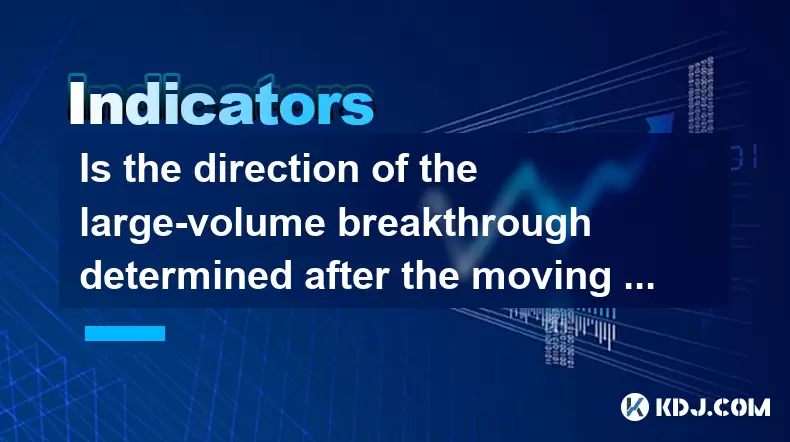-
 Bitcoin
Bitcoin $108,092.5658
-0.99% -
 Ethereum
Ethereum $2,546.4530
-1.12% -
 Tether USDt
Tether USDt $1.0000
0.01% -
 XRP
XRP $2.2676
0.12% -
 BNB
BNB $659.1616
-0.30% -
 Solana
Solana $148.8297
-1.97% -
 USDC
USDC $1.0000
0.02% -
 TRON
TRON $0.2874
-0.30% -
 Dogecoin
Dogecoin $0.1676
-3.64% -
 Cardano
Cardano $0.5765
-1.73% -
 Hyperliquid
Hyperliquid $37.2069
-6.18% -
 Bitcoin Cash
Bitcoin Cash $497.9918
-0.10% -
 Sui
Sui $2.8427
-2.26% -
 Chainlink
Chainlink $13.2689
-2.06% -
 UNUS SED LEO
UNUS SED LEO $9.0541
0.15% -
 Stellar
Stellar $0.2487
-0.92% -
 Avalanche
Avalanche $17.7710
-3.09% -
 Shiba Inu
Shiba Inu $0.0...01167
-1.28% -
 Toncoin
Toncoin $2.7488
-2.80% -
 Hedera
Hedera $0.1559
-2.28% -
 Litecoin
Litecoin $85.8945
-2.48% -
 Monero
Monero $316.0985
-2.09% -
 Dai
Dai $1.0001
0.02% -
 Polkadot
Polkadot $3.3481
-1.83% -
 Ethena USDe
Ethena USDe $1.0000
0.00% -
 Bitget Token
Bitget Token $4.2910
-3.04% -
 Uniswap
Uniswap $7.4131
-0.09% -
 Aave
Aave $280.9266
-2.67% -
 Pepe
Pepe $0.0...09816
-3.18% -
 Pi
Pi $0.4557
-2.29%
Is the direction of the large-volume breakthrough determined after the moving average is glued together?
Jun 30, 2025 at 04:00 am

Understanding Moving Average Glue in Cryptocurrency Trading
In the realm of technical analysis within cryptocurrency trading, moving averages (MAs) are widely used indicators that help traders identify trends and potential reversals. The concept of "glued moving averages" refers to a scenario where multiple MAs converge closely together on a price chart, often signaling a period of consolidation or indecision in the market.
When several moving averages — such as the 10-period, 20-period, and 50-period simple moving averages (SMA) — begin to cluster tightly, they form what is known as a glued MA setup. This phenomenon typically occurs during low volatility phases and can be observed across various timeframes, including hourly, daily, or weekly charts. In the crypto market, which is highly volatile and often driven by sentiment, this pattern can provide crucial insights into future price action.
The glued MA condition indicates that short-term and medium-term momentum has stalled. It suggests that neither buyers nor sellers have control, and the asset might be entering a phase of accumulation or distribution before a major move.
How Moving Averages Interact During Low Volatility
During periods of low volatility, especially in sideways markets, the distance between different moving averages narrows significantly. This narrowing creates the visual effect of "gluing." Since moving averages are lagging indicators, their convergence reflects the market's current equilibrium between supply and demand.
This phase can last for varying durations depending on the market structure and external factors like news events or macroeconomic shifts. In cryptocurrencies, where large-cap assets like Bitcoin and Ethereum often set the tone for the broader market, observing how these key assets behave during such phases becomes critical.
- Identify the moving averages used (e.g., SMA 10, SMA 20, SMA 50).
- Observe how tightly they are clustered on the chart.
- Note the timeframe being analyzed (intraday vs. daily).
It’s essential to recognize that while glued MAs indicate a pause in trend development, they do not inherently suggest direction. The breakout direction will depend on other factors such as volume, order flow, and catalysts.
The Role of Volume in Confirming Breakouts
Volume plays a pivotal role in determining the validity of any breakout following a glued MA formation. Large-volume breakouts occur when there is a sudden surge in buying or selling pressure that pushes the price decisively beyond the consolidation zone formed by the glued MAs.
In the context of cryptocurrencies, where liquidity can vary dramatically between altcoins and major coins, it’s crucial to differentiate between genuine volume surges and pump-and-dump scenarios. A valid breakout is usually accompanied by strong institutional or retail participation, reflected in increasing on-chain and exchange-based volume metrics.
Traders should look for a sharp increase in volume coinciding with a price move beyond the glued MA cluster. This combination increases the likelihood of a sustainable trend continuation or reversal.
To analyze volume effectively:
- Compare current volume levels to the average volume over the past 10–20 candles.
- Use volume profile tools to assess areas of high interest.
- Cross-reference with on-chain data for inflows/outflows from exchanges.
Determining the Direction After a Glued MA Setup
One of the most pressing questions among traders is whether the direction of the breakout after glued MAs can be predicted with any degree of certainty. The short answer is no — the breakout direction isn’t predetermined by the glued MA configuration itself.
However, certain conditions can improve the odds of anticipating the breakout direction:
- Pre-glue trend: If the glued MA forms after a strong uptrend or downtrend, the probability of continuation increases.
- Support/resistance levels: The proximity of key S/R zones can influence the breakout direction.
- Market sentiment: Social media trends, derivatives funding rates, and options open interest can provide directional bias.
For example, if Bitcoin experiences a glued MA formation near its previous all-time high and then breaks out with heavy volume, it could signal renewed bullish momentum. Conversely, a breakdown below the glued area with rising sell volume may imply bearish dominance.
Practical Steps to Trade a Glued MA Breakout
Trading glued MA setups requires a structured approach to entry, risk management, and confirmation. Here’s a step-by-step guide:
- Step 1: Identify the glued MA configuration on your preferred chart. Look for at least two overlapping moving averages close to each other.
- Step 2: Monitor volume patterns around the consolidation zone. Watch for signs of accumulation or distribution through volume spikes or divergence.
- Step 3: Wait for a clear breakout above or below the MA cluster. Avoid premature entries based on false breakouts.
- Step 4: Place a stop-loss just beyond the opposite side of the MA cluster. This helps manage risk if the breakout fails.
- Step 5: Set profit targets using Fibonacci extensions or prior swing highs/lows. Adjust targets dynamically based on new support/resistance levels forming post-breakout.
Using candlestick patterns like engulfing bars or inside bars during the breakout phase can further enhance trade accuracy.
Frequently Asked Questions
Q: Can glued moving averages appear on any timeframe?
Yes, glued MAs can occur on any timeframe, from intraday charts like 1-hour and 4-hour to daily and weekly charts. Shorter timeframes tend to show more frequent consolidations due to increased noise, while longer timeframes offer clearer signals but less frequent opportunities.
Q: Is the glued MA strategy suitable for all cryptocurrencies?
While the glued MA concept applies universally, its effectiveness varies. Major cryptocurrencies like Bitcoin and Ethereum tend to exhibit more reliable patterns due to higher liquidity and institutional involvement. Lower-cap altcoins may produce misleading signals due to thin order books and manipulation risks.
Q: How does the glued MA strategy compare to Bollinger Bands or Ichimoku Cloud?
Glued MAs focus on trend exhaustion and consolidation phases, whereas Bollinger Bands highlight volatility compression and expansion. Ichimoku Cloud offers a broader view of momentum and trend strength. Combining glued MAs with these tools can improve decision-making accuracy.
Q: What indicators complement glued MA setups in crypto trading?
Volume indicators like OBV (On-Balance Volume), VWAP (Volume Weighted Average Price), and Chaikin Money Flow (CMF) work well alongside glued MAs. Additionally, oscillators like RSI or MACD can confirm momentum shifts before or after the breakout occurs.
Clause de non-responsabilité:info@kdj.com
Les informations fournies ne constituent pas des conseils commerciaux. kdj.com n’assume aucune responsabilité pour les investissements effectués sur la base des informations fournies dans cet article. Les crypto-monnaies sont très volatiles et il est fortement recommandé d’investir avec prudence après une recherche approfondie!
Si vous pensez que le contenu utilisé sur ce site Web porte atteinte à vos droits d’auteur, veuillez nous contacter immédiatement (info@kdj.com) et nous le supprimerons dans les plus brefs délais.
-
 ICNT Échangez maintenant
ICNT Échangez maintenant$0.3182
30.31%
-
 M Échangez maintenant
M Échangez maintenant$0.2011
23.43%
-
 SOLO Échangez maintenant
SOLO Échangez maintenant$0.3788
17.55%
-
 HSK Échangez maintenant
HSK Échangez maintenant$0.7010
17.49%
-
 SHX Échangez maintenant
SHX Échangez maintenant$0.0116
15.42%
-
 COREUM Échangez maintenant
COREUM Échangez maintenant$0.1392
8.59%
- Bitcoin Solaris Market Launch: A New Dawn or Just Another Altcoin?
- 2025-07-08 20:30:12
- Bitcoin, Memecoin Mania, and the All-Time High Hunt: What's Next?
- 2025-07-08 20:30:12
- Byrq Coin: Scam or Savior? A Deep Dive Review
- 2025-07-08 20:50:12
- Shiba Inu's Burn Rate Bonanza: Can Crypto Burns Ignite a Price Rally?
- 2025-07-08 20:50:12
- XLM Price Prediction: Is Stellar Ready for a Breakout?
- 2025-07-08 19:10:13
- Memecoin Mania: V2EX, Pump.fun, and the Wild West of Crypto
- 2025-07-08 19:50:12
Connaissances connexes

How to trade Dogecoin based on funding rates and open interest
Jul 07,2025 at 02:49am
<h3>Understanding Funding Rates in Dogecoin Trading</h3><p>Funding rates are periodic payments made to either long or short traders ...

What is the 'God Mode' indicator for Dogecoin
Jul 07,2025 at 04:42pm
<h3>Understanding the 'God Mode' Indicator</h3><p>The 'God Mode' indicator is a term that has emerged within cryptocurrency trading ...

Using Gann Fans on the Dogecoin price chart
Jul 07,2025 at 09:43pm
<h3>Understanding Gann Fans and Their Relevance in Cryptocurrency Trading</h3><p>Gann Fans are a technical analysis tool developed b...

How to spot manipulation on the Dogecoin chart
Jul 06,2025 at 12:35pm
<h3>Understanding the Basics of Chart Manipulation</h3><p>Chart manipulation in the cryptocurrency space, particularly with Dogecoin...

Dogecoin market structure break explained
Jul 07,2025 at 02:51am
<h3>Understanding the Dogecoin Market Structure</h3><p>Dogecoin, initially created as a meme-based cryptocurrency, has evolved into ...

How to backtest a Dogecoin moving average strategy
Jul 08,2025 at 04:50am
<h3>What is a Moving Average Strategy in Cryptocurrency Trading?</h3><p>A moving average strategy is one of the most commonly used t...

How to trade Dogecoin based on funding rates and open interest
Jul 07,2025 at 02:49am
<h3>Understanding Funding Rates in Dogecoin Trading</h3><p>Funding rates are periodic payments made to either long or short traders ...

What is the 'God Mode' indicator for Dogecoin
Jul 07,2025 at 04:42pm
<h3>Understanding the 'God Mode' Indicator</h3><p>The 'God Mode' indicator is a term that has emerged within cryptocurrency trading ...

Using Gann Fans on the Dogecoin price chart
Jul 07,2025 at 09:43pm
<h3>Understanding Gann Fans and Their Relevance in Cryptocurrency Trading</h3><p>Gann Fans are a technical analysis tool developed b...

How to spot manipulation on the Dogecoin chart
Jul 06,2025 at 12:35pm
<h3>Understanding the Basics of Chart Manipulation</h3><p>Chart manipulation in the cryptocurrency space, particularly with Dogecoin...

Dogecoin market structure break explained
Jul 07,2025 at 02:51am
<h3>Understanding the Dogecoin Market Structure</h3><p>Dogecoin, initially created as a meme-based cryptocurrency, has evolved into ...

How to backtest a Dogecoin moving average strategy
Jul 08,2025 at 04:50am
<h3>What is a Moving Average Strategy in Cryptocurrency Trading?</h3><p>A moving average strategy is one of the most commonly used t...
Voir tous les articles

























































































